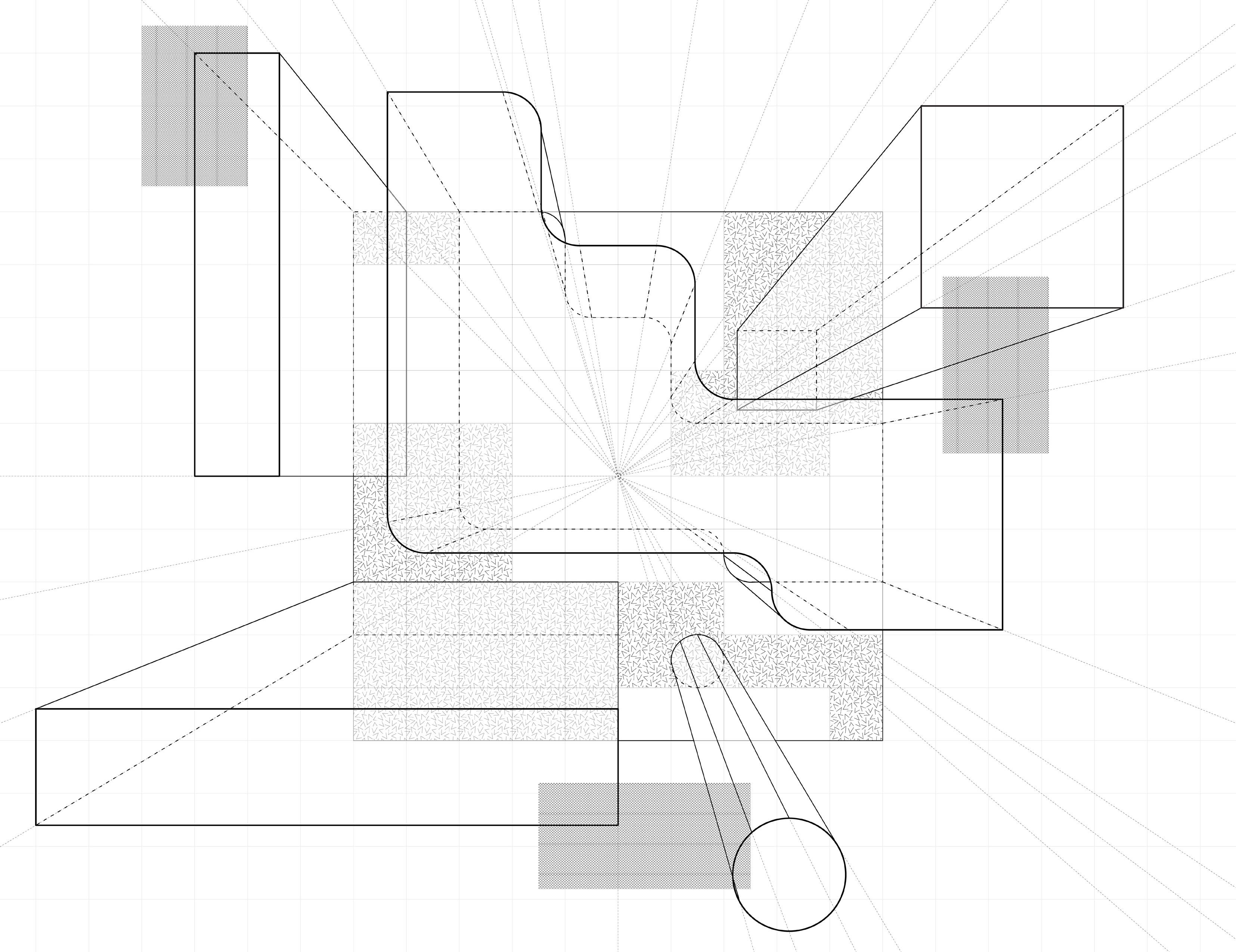ARCHITECTURE & DESIGN PORTFOLIO
FALL 2022


FALL 2022








This pavilion displays five semi-metallic taxidermy objects created by artist Julia deVille. Based on deVille’s philosophy of accepting mortality in order to fully appreciate life, the experience promotes existential contemplation through bright, open, and reflective spaces, as well as through several curving paths and changes in elevation that mimic life’s unpredictability.






Several field conditions experiments inspired the concept of the pavilion as centered around the overlap between two circular spaces at different elevations. This overlap acts as an area of union between separate spaces and as a focal point that displays an object that is suspended from above and can be viewed from both the upper and lower floors.

Section 1

Intersecting pathways guide the spectator to and through the pavilion. On these pathways, there is never a moment when the walls are less than 8’, causing the spectator to remain focused on the journey and what lies ahead, physically and existentially. Undulating walls begin to constrict toward the center of each level, urging the viewer to circulate the space.





Animation is an inherent part of the functional logic of the water bottle depicted on this page and the following page. After analyzing this object in plan, elevation, and section, an animated drawing of the water bottle being lifted and its lid being unscrewed was created using four distinct layers of vellum.






An unrolled cubic plan (far left) was created based on a continuous line across the cube’s sides, and it began an exploration into symmetries, as seen in the Y-shape and two zig-zagged “dead ends.” When portions of the cubic surface were removed and a physical model of the cube was built using basswood and colored paper, additional planes were also designed and modeled. The final model experiments with both shallow voids and dominant, extending voids, and it preserves the elements of symmetry that the unrolled plan began to indicate.





Each primitive figure, created with black construction paper, conveys several action verbs through its composition.


Upper left: slide, tip, pierce
Upper right: rotate, split, turn


Lower left: explode, balance
Lower right: float, magnetize
As interpretations of the primitive figures, these physical models convey the aforementioned action verbs in 3D. These objects are constrained within the bounds of a pyramid, a tower, a plate, and a cube, respectively.




These transformed digital models are the result of experiments with new means of expressing the previously established action verbs, while also incorporating new verbs, such as peel, bend, twist, taper, and melt.




These four connecting tiles aspire to convey a united and cohesive compositon through the flow of black fields, gray figures, and hatches across tiles. The lower left tile later inspired a one-point perspective drawing.
